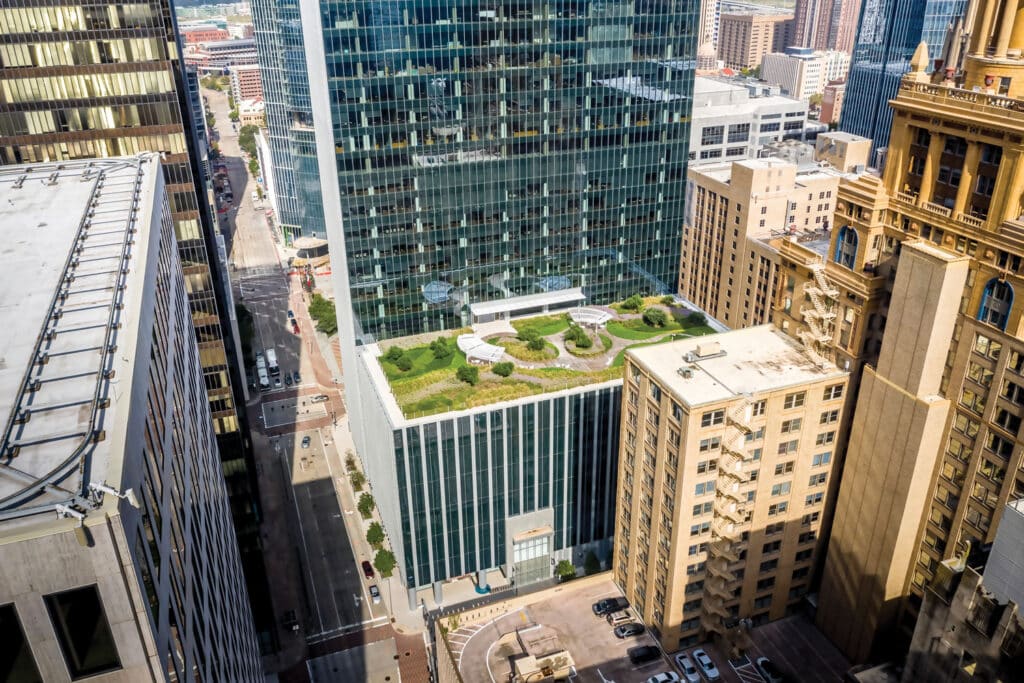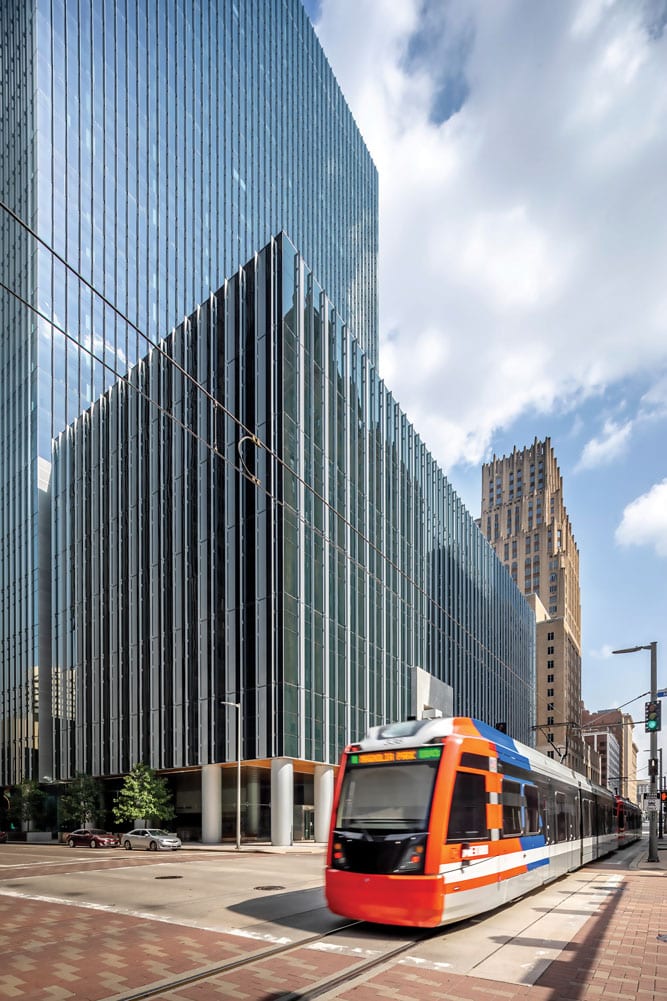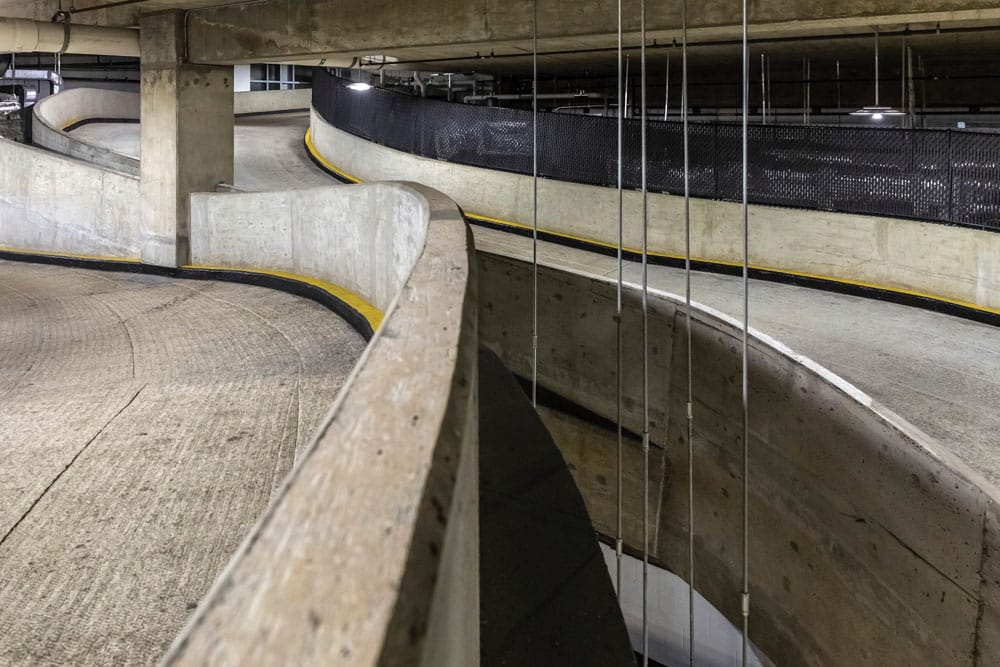Effective and Efficient Parking Structure Design

Planning and design of parking structures advances beyond typical level of service criteria
The planning and design of parking structures has evolved well beyond the days of a simple concrete structure with attendants staffing cashier booths.
Specifically, the planning and design of parking structures in urban spaces involves an integrated design approach that involves the building team and owner throughout the lifetime of the project. The planning and design of parking structures in urban areas can present detailed challenges related to engineering the proper solution as it relates to the site location, traffic planning for vehicular ingress and egress, proper aesthetics, economic impact of the parking structure, and sustainability.
Table of Contents
The planning and design of parking structures has evolved well beyond the days of a simple concrete structure with attendants staffing cashier booths.
Specifically, the planning and design of parking structures in urban spaces involves an integrated design approach that involves the building team and owner throughout the lifetime of the project. The planning and design of parking structures in urban areas can present detailed challenges related to engineering the proper solution as it relates to the site location, traffic planning for vehicular ingress and egress, proper aesthetics, economic impact of the parking structure, and sustainability.
Table of Contents
Walter P Moore’s Parking Services Group have been involved in the design and engineering of parking structures around the country that have required collaboration of the entire design team, as well as the owner, to provide an effective and efficient design that addresses the proper criteria to ensure the successful movement and storage of vehicles.
The three projects examined below were recently constructed in urban areas. Each project is diverse as it relates to the planning and design required by the design team and owner. By comparing and contrasting each of the projects, the functional planning and design standards are examined to provide viable takeaways that can be used for the next iteration of parking garage design.
Bank of America Tower
When it comes to assessing the parking demand for a development, the first component to look at is location. For example, a suburban office space typically requires a parking-demand ratio between 2.5 and 3.0 parking spaces for every 1,000 gross square feet (gsf). For a 500,000-gsf building, the parking demand can range from 1,250 to 1,500 parking spaces.
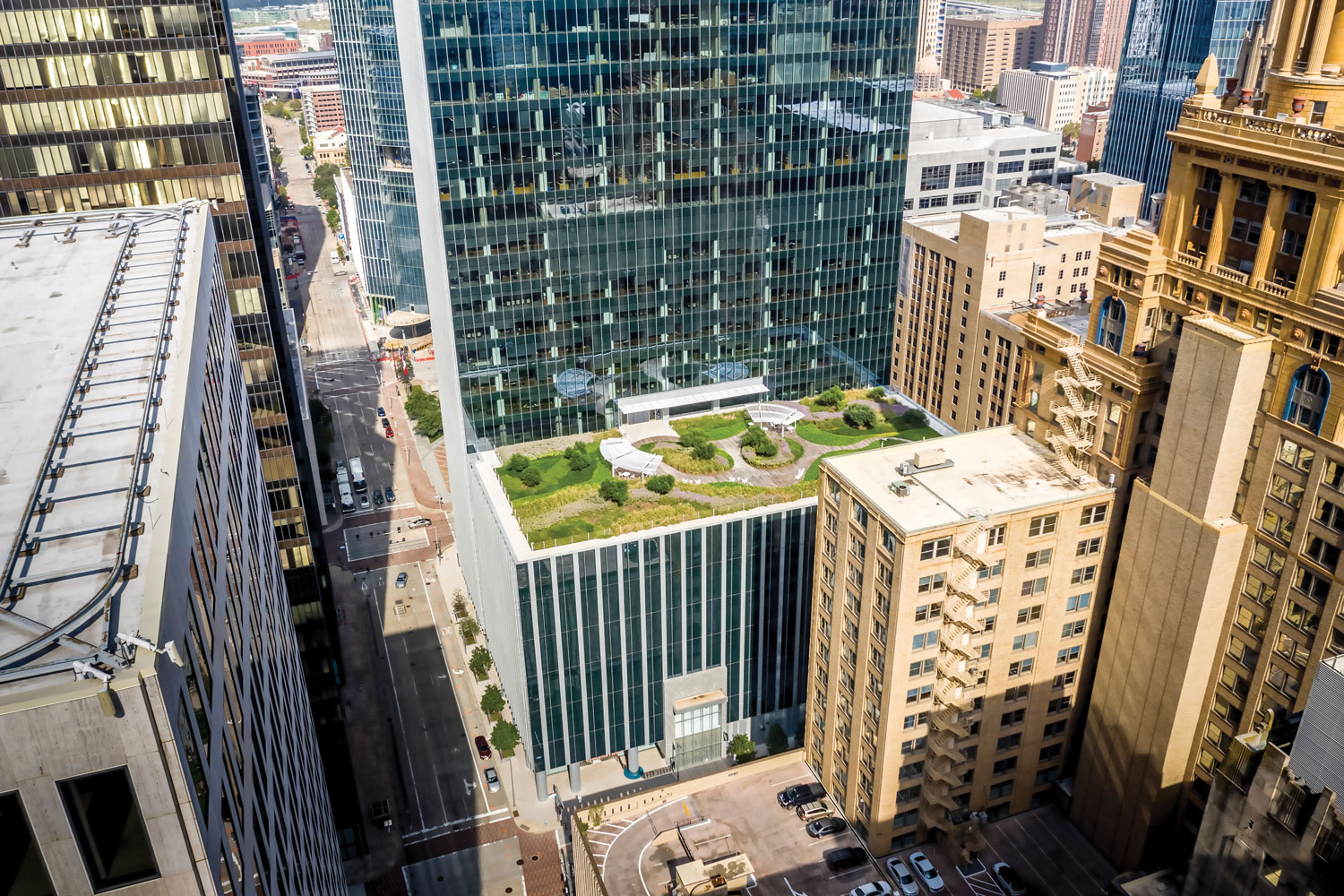
On the flip side, the same size development in an urban location requires a much smaller parking demand ratio—closer to 1.5 to 1.75 parking spaces per 1,000 gsf of office space. This equates to an approximate demand of 750-875 parking spaces.
For the Bank of America Tower in Houston, Texas, a 2021 IPMI Award of Excellence honoree for best design of a mixed-use parking and transportation facility, the developer wanted a garage designed with a parking ratio of between 1.5 and 2.0 parking spaces per 1,000 square feet. While the number of parking spaces provided an oversell ratio of 1.15, the developer was able to design a structure with a parking ratio close to 2.0.
This strategy was crucial in attracting the desired tenant for the building, which features mixed-use components including offices, retail, and outdoor space within the building’s footprint. Bank of America Tower is also located in the central business district, near entertainment, public park space, and various transit options.
Because there was flexibility with the construction schedule, the first phase of the Bank of America Tower project constructed was the parking garage. This allowed the developer the opportunity to generate parking revenue for a full year while the design and construction of the 35-story tower was completed.
The 11-story, 1,360-space parking structure was designed with a state-of-the-art outdoor sky park that sits atop the structure as the 12th floor. The sky park—the only tenant amenity of its type in Houston—provides tenants of the Bank of America Tower a unique outdoor space with views of downtown while nestled between trees and wooden canopies, but it also serves as a model for sustainable urban structures.
The Bank of America Tower is the first project in the United States to achieve LEED v4 Platinum Core and Shell Certification. It was the only LEED v4 project to attempt the Whole Building Life Cycle Assessment (WBLCA) credit, which Walter P Moore led. The WBLCA allowed the building team to identify combinations of materials that made the most significant contributions to environmental impacts and develop reduction strategies accordingly. Based on these studies, the team developed a strategy of aggressive cement minimization, which led to a projected 19 percent reduction in global warming potential and a 12 percent reduction in acidification.
Patrons of the garage utilize a state-of-the-art Parking Access and Revenue Control System (PARCS) that efficiently manages both contract/monthly and transient/visitor parking needs. An Automatic Vehicle Identification (AVI) Reader system was specifically specified to facilitate the rapid ingress and egress of contract parkers and provides hands-free access. Visitors utilize a convenient Pay-on-Foot (POF) and Pay-in-Lane system.

At level 2 of the garage, the express ramp system transitions to a traditional double helix ramping system. The one-way double helix ramping system was chosen to accommodate the large peak loading conditions from the office patrons while providing an intuitive traffic flow. Crossovers are provided at each level which enhances the level of service over a traditional double helix system.
Bay widths are two feet wider than what is normally accepted for angled parking to provide a higher Level of Service (LOS) for all patrons. End bays are also larger to provide comfortable turning maneuvers and easily accommodate full size trucks and SUV’s.
Both the tower and parking garage are wrapped in a beautiful glass curtain wall system with varying levels of contrast and metal accents to provide a sophisticated appearance. As the garage takes up a significant portion of the site, the architects wanted to ensure that the tower and garage appeared as a seamless project. From the street level, one cannot tell where the building footprint ends, and the garage footprint begins.
Midtown Park
Midtown Park in Houston, Texas, is a landmark project for the city that offers a number of amenities designed with sustainability in mind. The 771-acre district includes mixed-use residential/retail, multifamily residential, and office parking generators. The epicenter of the district is a three-acre park with a 400-space parking garage directly underneath the park and other amenities such as an entertainment pavilion, water features, and restaurants.
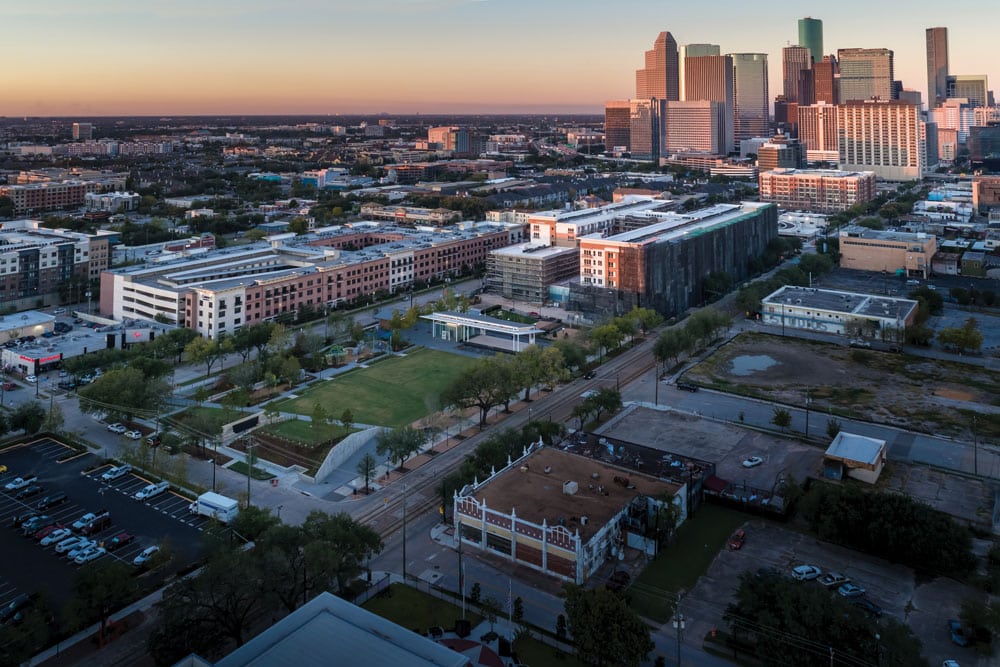
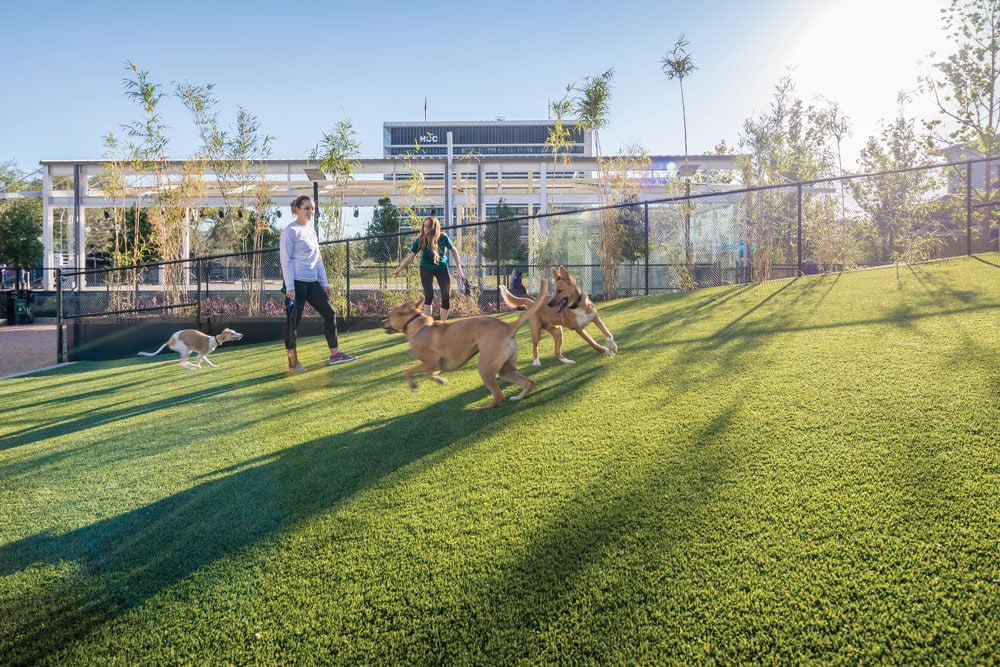
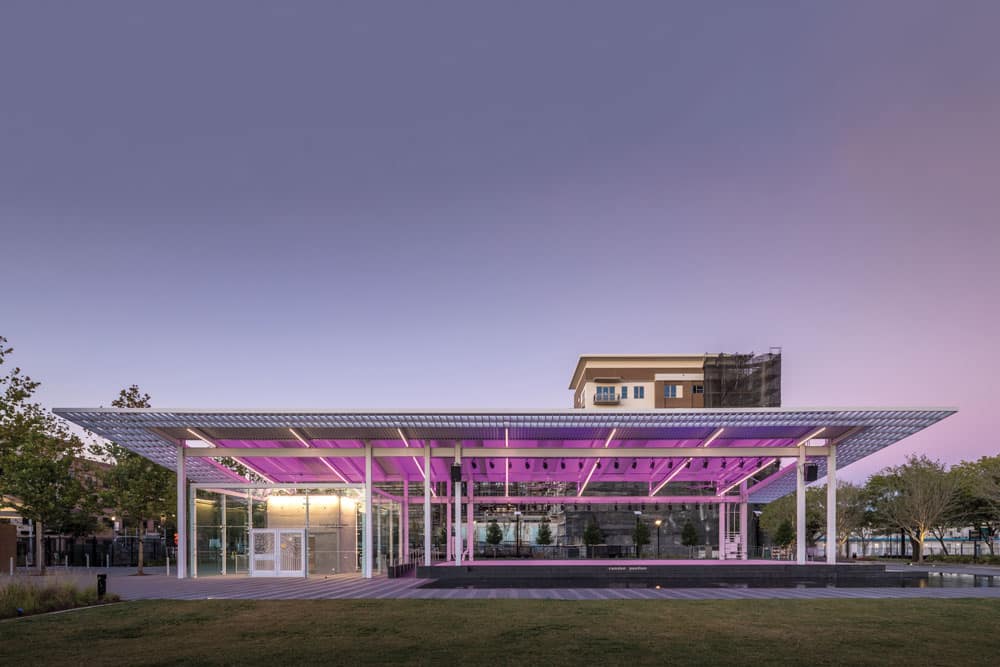
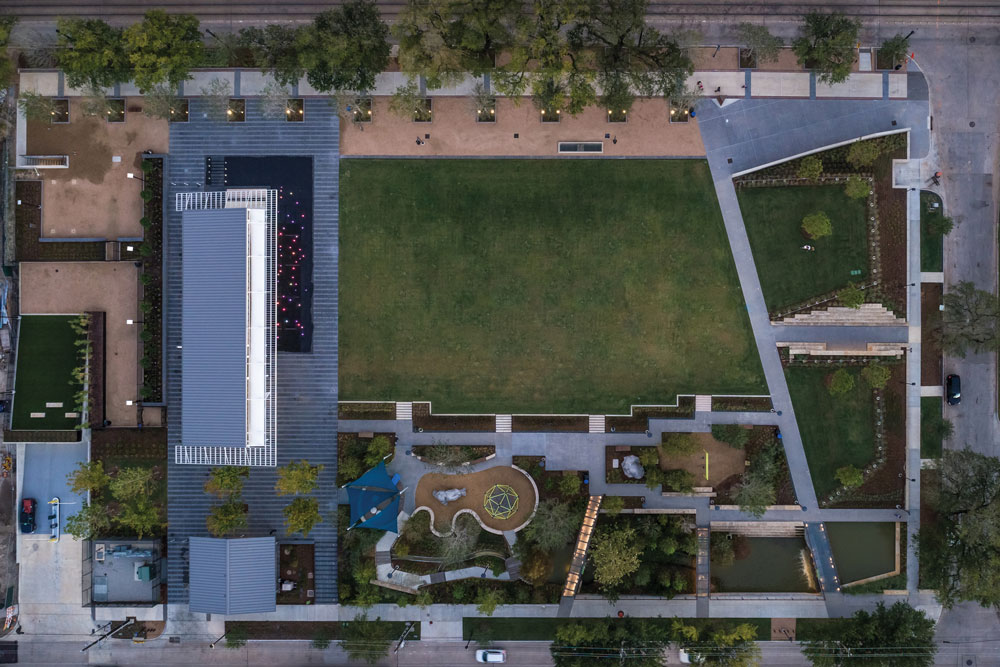
“In addition to increasing community gathering opportunities and enhancing the quality of life for current Midtown residents, the park is an economic development catalyst that has attracted new development to Midtown,” says Marlon Marshall, director of engineering and construction for the Midtown Redevelopment Authority (MRA). “Parks help to maximize the long-term value of real estate because businesses and residents are willing to pay a premium to be near parks.”
With nearly 10,000 residents, Midtown is one of the most walkable neighborhoods in Houston, but there was a significant lack of parking space. To address the parking issue, the MRA developed their “super” project—the Midtown Park and Garage.
The vision for the full six-acre mixed-use project that includes the underground garage was developed by the MRA board, staff, and design team consultants along with community and stakeholder input. According to Marshall, the goal was to create a premier urban park space in the heart of Midtown to become the focal point for the community and function as a catalyst to attract new development to the Main Street Corridor.
“With the addition of parking to the project, there was a need to add a parking design firm to our team,” Marshall says. “We had recently engaged with Walter P Moore as our consultant engineering firm on successful mobility and roadway infrastructure projects, and we were fortunate to have access to the Walter P Moore Parking Services Group to guide us through the development of the parking garage.”
Though there were numerous iterations to the project design, all parties involved in the Midtown project partnered together to meld the structures in an effort to preserve the integrity of the park’s purpose and view corridors.
“Because of the complexity of the structure and simultaneous construction of multi-family housing in the grounds, immense collaboration was required from all parties,” says Brian Lozano, director of parking services at Walter P Moore.
One challenge of the project was how to host a living, sustainable park above a below-grade parking garage. Walter P Moore structural and diagnostic engineers worked closely with parking engineers to design an operationally efficient garage while allows the park’s trees to also grow and thrive. According to Lozano, after consulting with the landscape architecture firm Design Workshop, large trees were planted throughout the park that needed over five feet of clearance from the soil to the top of the structure to allow them to grow. To ensure this was possible, the lid of the garage was sloped to allow for proper clearance for the grass blanketing the lawn space, and a greater distance to sustain the trees.
Because the 400-space parking garage lives under the park, an intricate system of under slab draining capabilities, robust waterproofing, pumps, and a rainwater vault serve to self-water the landscape. The system also prevented the garage from flooding during Hurricane Harvey in 2017. Rainwater is collected through a piping system in the garage before it is pumped into a 70,000-gallon irrigation vault underground.
“The grounds are sustainable because the rainwater is used to water the lawn and planting areas,” Lozano says.
The team planned for the impressive rainfall that often hits the Houston area—as was the case with Hurricane Harvey—and integrated a backup plan. According to Lozano, when the vault is full, the water bypasses to the water features, which circulate and produce waterfalls under the bridges and other areas throughout the park.”
The design of the entrance to the underground garage is raised and angled to allow for height space. As a result, the top side of the sloped entrance to the garage operates as a portion of the off-leash dog park.
“Since the start of construction at Midtown Park, there have been six new private development projects announced within three blocks of the park,” Marshall says. “These ongoing, planned, or recently announced redevelopment projects include mixed-use residential/retail, multifamily residential, and office projects which will generate an estimated $338 million in new taxable value in Midtown.”
Virginia Commonwealth University
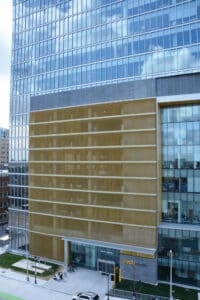
Designed to provide safe and convenient access as well as accommodate patients, their families and VCU medical staff, the garage has a total of 1,109 spaces within 12 levels—two below-grade and 10 above-grade. One unique aspect to this garage are the 150 valet spaces that are located below-grade via a single entrance and exit in order to ease the transition from a vehicle into the hospital for Massey Cancer Center patients that require specific needs.
The garage is a critical hub for the hospital; therefore, the garage was designed with two entrances/exits for the self-park levels.
The above-grade garage is a park-on-ramp single-threaded helix to maximize the number of parking spaces within the narrow structural footprint. This section of the garage connects to the VCU Hospital at Level 1.
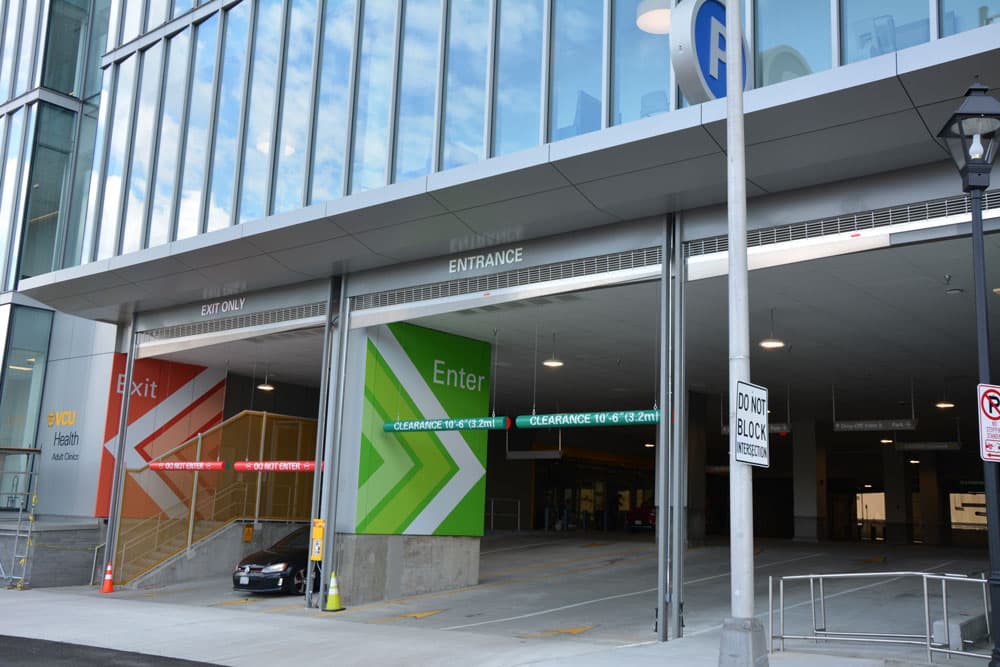
One design aspect critical to the VCU garage involved the reduction of traffic congestion at the entrance and exits to the garage. To accomplish this, improvements were made to the adjacent roadways and access to the garage was controlled through turning movement restrictions. Furthermore, the below-grade valet level can only be accessed by an express ramp. The valet drop-off/pick-up zone provides ample space for vehicles to queue inside the garage itself. This also reduced on street traffic congestion that previously occurred at five separate valet locations located on the hospital campus.
-
This author does not have any more posts.

More…True Stories from the Quirky World of Parking
A Review of the Newest Book from Larry J Cohen
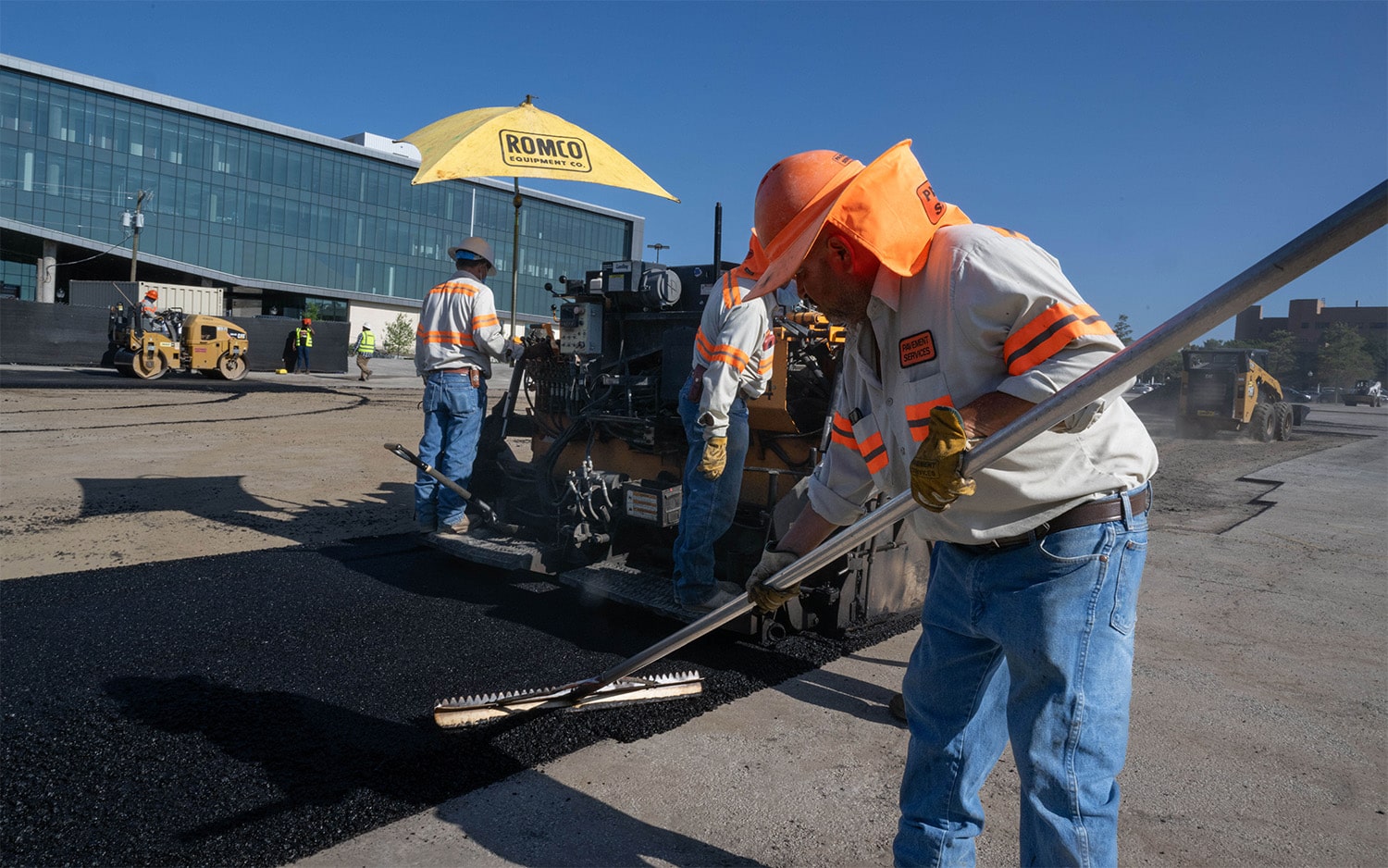
Parking on Plastic
A New Frontier in Sustainability

Revolutionizing the Park-and-Fly Experience
Case Study Bringing 24 7 Customer Service to Regina International

